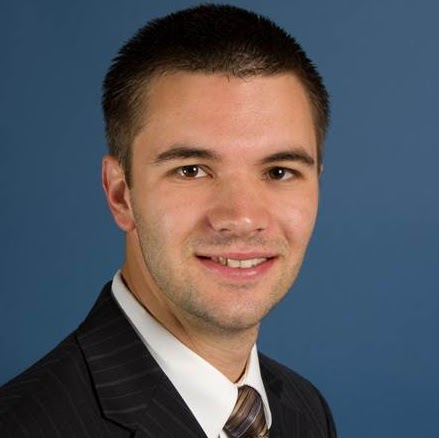Andrew Mclain Baxter
age ~46
from Eagle Mountain, UT
- Also known as:
-
- Andrew M Baxter
- Andrew M Baxer
- John Baxter
Andrew Baxter Phones & Addresses
- Eagle Mountain, UT
- American Fork, UT
- Springville, UT
- Las Vegas, NV
- Spanish Fork, UT
- Beaverton, OR
- 5027 Reiter Ave, Las Vegas, NV 89108
Work
-
Company:Sustainable energy solutions2008
-
Position:Cofounder/president
Education
-
School / High School:RICE UNIVERSITY, JONES GRADUATE SCHOOL OF BUSINESS- Houston, TX2011
-
Specialities:MBA in Finance, Strategy, Entrepreneurship
Emails
Medicine Doctors

Andrew G. Baxter
view sourceSpecialties:
Anesthesiology
Work:
Hartford Anesthesiology Associates
80 Seymour St STE JB333, Hartford, CT 06102
8609722117 (phone), 8605451784 (fax)
80 Seymour St STE JB333, Hartford, CT 06102
8609722117 (phone), 8605451784 (fax)
Education:
Medical School
University of North Carolina School of Medicine at Chapel Hill
Graduated: 1992
University of North Carolina School of Medicine at Chapel Hill
Graduated: 1992
Languages:
English
Description:
Dr. Baxter graduated from the University of North Carolina School of Medicine at Chapel Hill in 1992. He works in Hartford, CT and specializes in Anesthesiology. Dr. Baxter is affiliated with Hartford Hospital and UConn Health Center.
Isbn (Books And Publications)


Resumes

Devops Engineer
view sourceLocation:
3401 north Thanksgiving Way, Lehi, UT 84043
Industry:
Financial Services
Work:
Verisys Corporation
Devops Engineer
Mx.com
Linux Administrator and Devops Engineer
Buypd Jan 2014 - Dec 2014
Linux Systems Administrator and Devops
Hand and Ortho Jul 2013 - Jan 2014
Junior Systems Administrator
Provo School District Jun 2008 - Nov 2009
Junior System Administrator
Devops Engineer
Mx.com
Linux Administrator and Devops Engineer
Buypd Jan 2014 - Dec 2014
Linux Systems Administrator and Devops
Hand and Ortho Jul 2013 - Jan 2014
Junior Systems Administrator
Provo School District Jun 2008 - Nov 2009
Junior System Administrator
Education:
Utah Valley University 2012 - 2015
Timpview High School
Timpview High School
Skills:
Microsoft Office
Leadership
Sql
Management
Team Leadership
Leadership
Sql
Management
Team Leadership
Languages:
English
Certifications:
Apple Certified

Field Inspector
view sourceWork:
City of American Fork
Field Inspector
Field Inspector
Skills:
Highways
Inspection
Materials
Post Tensioning
Reinforced Concrete
Inspection
Materials
Post Tensioning
Reinforced Concrete

Andrew Baxter
view source
Andrew Baxter
view source
Andrew Baxter
view source
Andrew Baxter
view sourceLocation:
United States

Andrew Baxter
view sourceLocation:
United States

Andrew Baxter
view sourceLocation:
United States
Name / Title
Company / Classification
Phones & Addresses
Managing
Sustainable Energy Solutions, LLC
Renewables & Environment · Engineering Services
Renewables & Environment · Engineering Services
1193 S 1480 W, Orem, UT 84058
Manager
County of Pasco
Executive Office · Executive/Legislative Combined · Court · General Government Executive Office · General Government · Individual/Family Services Executive Office · Legal Counsel/Prosecution · Business Services Executive Office
Executive Office · Executive/Legislative Combined · Court · General Government Executive Office · General Government · Individual/Family Services Executive Office · Legal Counsel/Prosecution · Business Services Executive Office
7278478173, 7278343292, 7278478115, 7278478028
Us Patents
-
Recuperative Heat Exchange For Desiccation Of Cold Fluids
view source -
US Patent:20190128604, May 2, 2019
-
Filed:Oct 27, 2017
-
Appl. No.:15/795953
-
Inventors:Larry Baxter - Orem UT, US
Aaron Sayre - Spanish Fork UT, US
Kyler Stitt - Lindon UT, US
Eric Mansfield - Spanish Fork UT, US
Christopher Hoeger - Provo UT, US
Andrew Baxter - Spanish Fork UT, US
Nathan Davis - Bountiful UT, US -
International Classification:F25J 3/08
B01D 53/02
B01D 15/08 -
Abstract:Devices, systems, and methods for removing a component from a fluid are disclosed. A feed fluid is heated by passing the feed fluid through a heating path of a first indirect-contact heat exchanger (ICHE). The feed fluid contains a first component. The fluid is heated from a first temperature to a second temperature, resulting in a heated feed fluid. The heated feed fluid is passed through a desiccator, containing a desiccant. The first component is bound up to the desiccant, resulting in a stripped-heated feed fluid. The stripped-heated feed fluid is cooled by passing the stripped-heated feed fluid through a cooling path of the first indirect-contact heat exchanger (ICHE). The stripped-heated feed fluid is cooled from a second temperature to a third temperature, the third temperature being greater than the first temperature, producing a product fluid.
-
Method For Recycling Streams In A Separations Process
view source -
US Patent:20180340731, Nov 29, 2018
-
Filed:May 23, 2017
-
Appl. No.:15/602795
-
Inventors:Larry Baxter - Orem UT, US
Eric Mansfield - Spanish Fork UT, US
Andrew Baxter - Spanish Fork UT, US
David Frankman - Provo UT, US -
International Classification:F25J 3/08
-
Abstract:A method and apparatus for recycling streams in a separations process comprising: determining a measured reading of a parameter of the separations processor is in a suboptimal range; separating, via a separation unit having a volume of contact fluid, the inert gas from the pollutant gas in the inlet flue gas stream to form a clean gas stream and a purified pollutant gas stream; removing at least 1% of the volume of contact fluid to form a removed volume of contact liquid; performing some unit operations on the removed volume of contact fluid; injecting the clean gas stream into the inlet flue gas stream to form a flue gas stream of lower pollutant concentration; and, repeating at progressively lower pollutant concentration, as the inlet stream until the processor determines that a measured reading of the parameter has been returned to a substantially optimal range.
-
Method For Separating Components Using Solids Producing Multi-Stage Direct And Indirect-Contact Exchange
view source -
US Patent:20180306495, Oct 25, 2018
-
Filed:Apr 24, 2017
-
Appl. No.:15/495217
-
Inventors:Larry Baxter - Orem UT, US
Christopher Hoeger - Provo UT, US
Stephanie Burt - Provo UT, US
Kyler Stitt - Lindon UT, US
Eric Mansfield - Spanish Fork UT, US
Aaron Sayre - Spanish Fork UT, US
David Frankman - Provo UT, US
Andrew Baxter - Spanish Fork UT, US
Nathan Davis - Bountiful UT, US -
International Classification:F25J 3/02
B01D 53/26 -
Abstract:A process for forming a solid product or products is disclosed. The process is provided with n desublimating exchangers. An exchanger E being associated with a first exchanger and an exchanger En being associated with an nth exchanger, n representing the number of exchangers. The n exchangers comprise at least one direct-contact exchanger comprising a contact fluid. A process fluid is passed through the n exchangers in order from E through En. The process fluid comprises a product component or components. The solid product or products form from the product component or components in the plurality of exchangers by desublimation. The solid product or products are separated from the process fluid. In this manner, a solid product or products is formed.
-
Method For Preventing Fouling Of A Demister
view source -
US Patent:20180299194, Oct 18, 2018
-
Filed:Apr 12, 2017
-
Appl. No.:15/485569
-
Inventors:Larry Baxter - Orem UT, US
Andrew Baxter - Spanish Fork UT, US
Kyler Stitt - Lindon UT, US
Aaron Sayre - Spanish Fork UT, US
Stephanie Burt - Provo UT, US
David Frankman - Provo UT, US
Nathan Davis - Bountiful UT, US -
International Classification:F25J 3/02
B01D 45/08 -
Abstract:A method for preventing fouling of a demister is disclosed. A process fluid is provided into a vessel. A gas is provided to a gas inlet of the vessel. The gas comprises a component that desublimates, crystallizes, solidifies, reacts, or a combination thereof, in the process fluid, forming a first solid. The gas is passed through the process fluid, the component of the gas forming the first solid, resulting in a component-depleted gas. The component-depleted gas is passed out of the process fluid, causing splashing or spurting of the process fluid and the first solid. The diverter section is provided between the demister and the gas inlet, the diverter section comprising a physical obstruction preventing the process fluid and the first solid from splashing or spurting onto the demister. In this manner, fouling of the demister is prevented.
-
Self-Cleaning Desublimating Heat Exchanger For Gas/Vapor Separation
view source -
US Patent:20180266761, Sep 20, 2018
-
Filed:Mar 20, 2017
-
Appl. No.:15/464250
-
Inventors:Larry Baxter - Orem UT, US
Skyler Chamberlain - Provo UT, US
Eric Mansfield - Spanish Fork UT, US
Andrew Baxter - Spanish Fork UT, US
Nathan Davis - Bountiful UT, US -
International Classification:F25J 3/08
-
Abstract:A heat exchanger for separating a vapor component from a carrier gas is disclosed. The carrier gas is cooled in an outer chamber, causing a vapor component of the carrier gas to desublimate or condense onto an outer surface of an inner chamber, forming a solid product. A coolant is passed through the inner chamber to cool the carrier gas of the outer chamber. A means for causing the inner chamber to flex is provided, causing the solid product to fall from the outer surface of the inner chamber for collection. In this manner, the vapor component is separated from the carrier gas.
-
Hydrocyclone For Cryogenic Gas-Vapor Separation
view source -
US Patent:20180236397, Aug 23, 2018
-
Filed:Feb 22, 2017
-
Appl. No.:15/439177
-
Inventors:Larry Baxter - Orem UT, US
Christopher Hoeger - Provo UT, US
Aaron Sayre - Spanish Fork UT, US
Skyler Chamberlain - Provo UT, US
Kyler Stitt - Lindon UT, US
Eric Mansfield - Spanish Fork UT, US
Stephanie Burt - Provo UT, US
Andrew Baxter - Spanish Fork UT, US
Jacom Chamberlain - Provo UT, US
Nathan Davis - Bountiful UT, US -
International Classification:B01D 53/18
B01D 53/00
B01D 7/00
B04C 5/04
B04C 5/13
B04C 9/00
F25J 3/08 -
Abstract:A hydrocyclone for separating a vapor from a carrier gas is disclosed. The hydrocyclone comprises one or more nozzles. A cryogenic liquid is injected to a tangential feed inlet at a velocity that induces a tangential flow and a cyclone vortex in the hydrocyclone. The carrier gas is injected into the cryogenic liquid, causing the vapor to dissolve, condense, desublimate, or a combination thereof, forming a vapor-depleted carrier gas and a vapor-enriched cryogenic liquid. The vapor-depleted carrier gas is drawn through a vortex finder and the vapor-enriched cryogenic liquid is drawn through an apex nozzle outlet. In this manner, the vapor is removed from the carrier gas.
-
Method For Using An Air-Sparged Hydrocyclone For Cryogenic Gas Vapor Separation
view source -
US Patent:20180236460, Aug 23, 2018
-
Filed:Feb 21, 2017
-
Appl. No.:15/438245
-
Inventors:Larry Baxter - Orem UT, US
Christopher Hoeger - Provo UT, US
Aaron Sayre - Spanish Fork UT, US
Skyler Chamberlain - Provo UT, US
Kyler Stitt - Lindon UT, US
Stephanie Burt - Provo UT, US
Eric Mansfield - Spanish Fork UT, US
Jacom Chamberlain - Provo UT, US
Andrew Baxter - Spanish Fork UT, US
Nathan Davis - Bountiful UT, US -
International Classification:B03D 1/14
F25J 3/06
B04C 7/00 -
Abstract:A method for separating a vapor from a carrier gas is disclosed. An air-sparged hydrocyclone is provided with a porous sparger covered by an outer gas plenum. A cryogenic liquid is provided to the tangential feed inlet at a velocity that induces a tangential flow and a cyclone vortex in the cyclone. The carrier gas is injected into the air-sparged hydrocyclone through the porous sparger. The vapor dissolves, condenses, desublimates, or a combination thereof, forming a vapor-depleted carrier gas and a vapor-enriched cryogenic liquid. The vapor-depleted gas is drawn through a vortex finder while the vapor-enriched cryogenic liquid is drawn through an apex nozzle outlet. In this manner, the vapor is removed from the carrier gas.
-
Method For Using A Hydrocyclone For Cryogenic Gas Vapor Separation
view source -
US Patent:20180238619, Aug 23, 2018
-
Filed:Feb 22, 2017
-
Appl. No.:15/439305
-
Inventors:Larry Baxter - Orem UT, US
Christopher Hoeger - Provo UT, US
Aaron Sayre - Spanish Fork UT, US
Skyler Chamberlain - Provo UT, US
Kyler Stitt - Lindon UT, US
Eric Mansfield - Spanish Fork UT, US
Jacom Chamberlain - Provo UT, US
Stephanie Burt - Provo UT, US
Andrew Baxter - Spanish Fork UT, US
Nathan Davis - Bountiful UT, US -
International Classification:F25J 3/08
B01D 53/00
B01D 53/26
B01D 45/12
B04C 5/04
B04C 5/13
B04C 5/14 -
Abstract:A method for separating a vapor from a carrier gas is disclosed. A hydrocyclone is provided with one or more nozzles on the wall of the hydrocyclone. A cryogenic liquid is provided to the tangential feed inlet at a velocity that induces a tangential flow and a cyclone vortex in the hydrocyclone. The carrier gas is injected into the hydrocyclone through the one or more nozzles. The vapor dissolves, condenses, desublimates, or a combination thereof, forming a vapor-depleted carrier gas and a vapor-enriched cryogenic liquid. The vapor-depleted gas is drawn through the vortex finder while the vapor-enriched cryogenic liquid is drawn through the apex nozzle outlet. In this manner, the vapor is removed from the carrier gas.
License Records
Andrew Mclain Baxter
Address:
Highland, UT
License #:
8100300-5602 - Active
Category:
Building Inspector
Issued Date:
Sep 15, 2011
Expiration Date:
Nov 30, 2017
Type:
Limited Inspector
Andrew K Baxter
License #:
01846 - Expired
Category:
Accountants
Issued Date:
Apr 23, 1990
Expiration Date:
Jun 30, 2008
Type:
Certified Public Accountant
Andrew Baxter
License #:
1976812 - Expired
Category:
Health Care
Issued Date:
Jan 2, 1989
Effective Date:
Jan 1, 1901
Expiration Date:
Apr 30, 1997
Type:
Registered Nurse
Googleplus

Andrew Baxter
Work:
Sustainable Energy Solutions
Education:
Rice University - MBA, Brigham Young University - Economics

Andrew Baxter
Education:
Valencia College - Nursing

Andrew Baxter
Work:
Vendo - Project Manager

Andrew Baxter

Andrew Baxter

Andrew Baxter

Andrew Baxter

Andrew Baxter
Classmates

Andrew Baxter
view sourceSchools:
William Aberhart High School Calgary Azores 1989-1993

Andrew Baxter
view sourceSchools:
Pequea Valley High School Kinzers PA 1993-1997
Community:
Kathy Chambers, David Blessing

Andrew Baxter (Rocks)
view sourceSchools:
Etna Union High School Etna CA 1998-2002
Community:
Mayla Smith, Debra Lovett

Andrew Baxter
view sourceSchools:
Yarmouth Consolidated High School Yarmouth Swaziland 1983-1987
Community:
John Hood, Roseanne Blades, Laurie Pike

Andrew Baxter
view sourceSchools:
St. Rita College Paranaque OR 1976-1980

Andrew Baxter
view sourceSchools:
Hyde Park Elementary School Niagara Falls NY 1973-1980, Gaskill Junior High School Niagara Falls NY 1980-1983
Community:
Cherrill Moshier

Andrew Baxter
view sourceSchools:
Creswell High School Creswell OR 1992-1996
Community:
Jonathon Lewis, Melissa Gilbertson, Sausha Holland, Delila Massey, Aimee Ward, Sergio Pantoja, Bryan Ruckle, Ali Heath, Van Krenik, Louise Smith, Wendy Harper, Jason Mackey

Andrew Baxter
view sourceSchools:
St. Peter Catholic High School Orleans Morocco 1998-2002

Andrew Minkyu Baxter
view source
Andrew W Baxter
view source
Andrew Baxter Gwen Hart
view source
Andrew Dee Baxter
view source
Andrew Baxter
view source
Andrew Baxter Jr
view source
Andrew Baxter Kendall
view source
Matthew Andrew Baxter
view sourceYoutube
Plaxo

Andrew Baxter
view sourceSydneyHeavy Structures Team Leader at Sinclair Knight Me...

Andrew Baxter
view sourceGet Report for Andrew Mclain Baxter from Eagle Mountain, UT, age ~46





